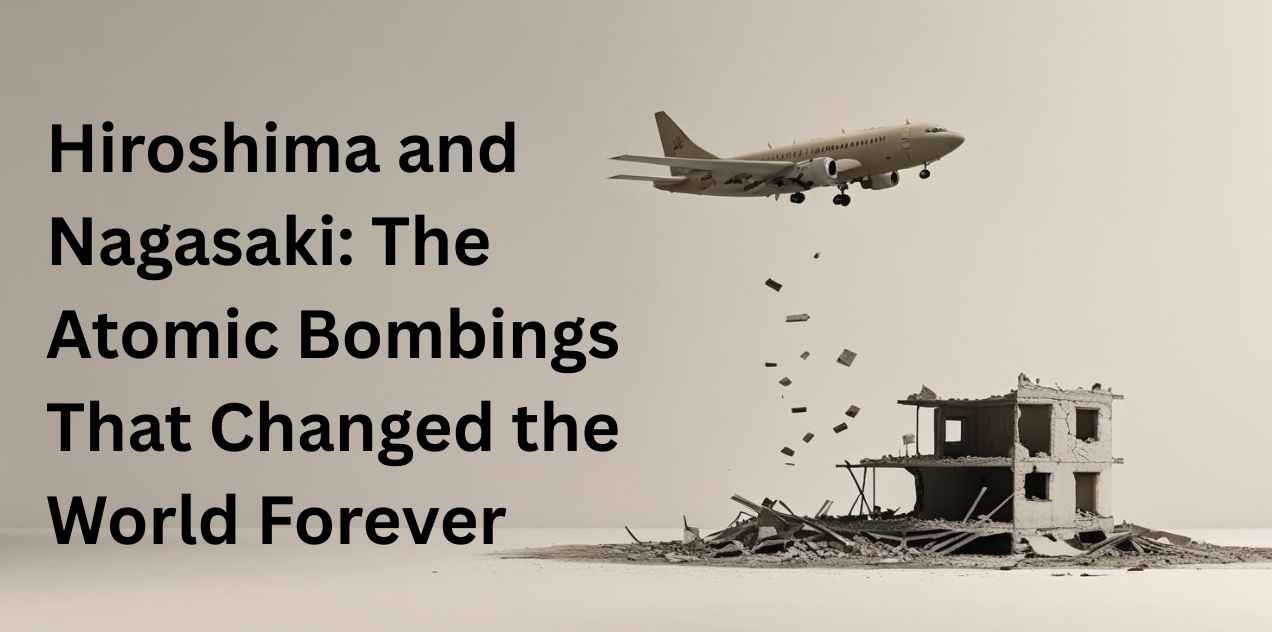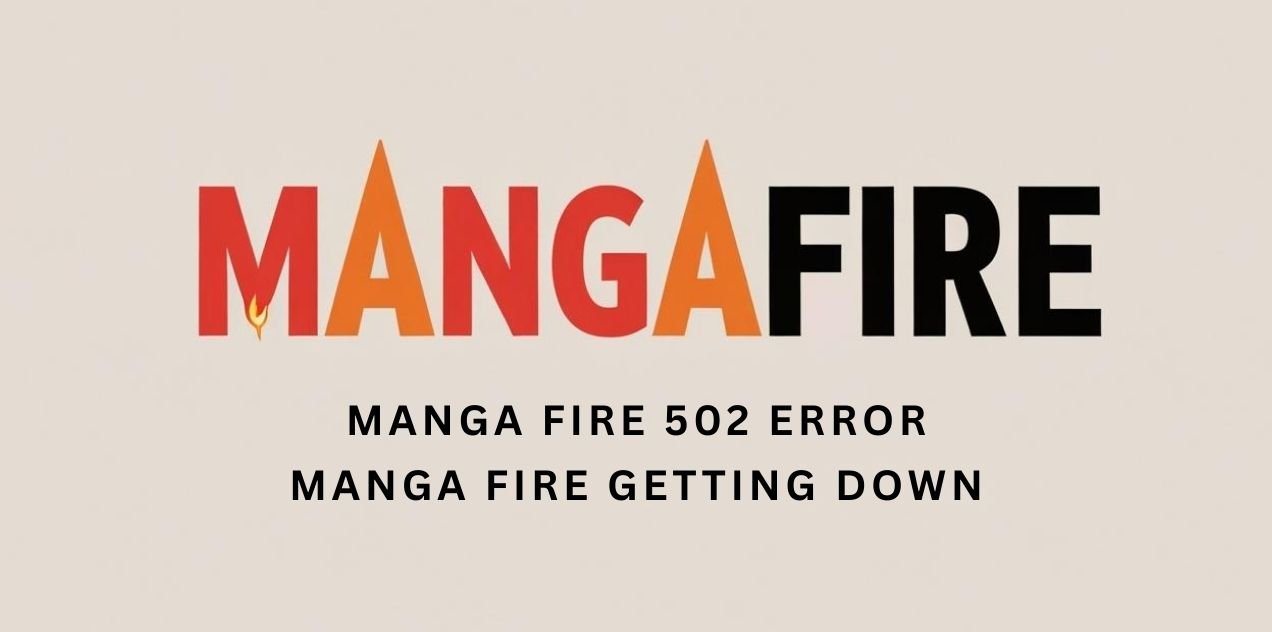Introduction – The Day the Sky Caught Fire
Hiroshima and Nagasaki awoke on the morning of August 6, 1945, just like any other summer day. People rushed to work, kids walked to school, and the sun rose over the mountains. The air was still and clear — until 8:15 a.m., when a flash brighter than the sun turned morning into instant chaos.
In that moment, the first atomic bomb used in war exploded over the city. Three days later, Nagasaki suffered the same fate. These two events ended World War II, but they also opened the nuclear age — a period that still shapes our world today.
1. The War Before the Bomb
By 1945, World War II had left cities in ruins and families torn apart across the globe. Germany had surrendered in May, but Japan refused to give in, despite being surrounded and heavily bombed.
The United States and its allies feared that a full invasion of Japan’s home islands would cause catastrophic casualties. Battles like Okinawa had already cost hundreds of thousands of lives.
At the same time, scientists working in secret under the Manhattan Project had created a weapon that could destroy an entire city in a single strike.
2. The Decision to Drop the Bomb
President Harry S. Truman faced a decision with no easy answers. The new atomic bomb could end the war quickly, but it would also cause massive civilian deaths.
Military leaders chose Hiroshima as the first target because it was a major military command center and had not yet been heavily bombed. Nagasaki was chosen as the second target for similar reasons.
3. Hiroshima – August 6, 1945
The B-29 bomber Enola Gay dropped “Little Boy,” a uranium-based bomb, at 8:15 a.m. It exploded 600 meters above the city, releasing energy equal to 15,000 tons of TNT.
In seconds:
- Temperatures reached several million degrees Celsius
- Buildings within 2 kilometers were flattened
- Around 70,000–80,000 people died instantly
4. The City Before the Blast
Before that morning, Hiroshima was a thriving city of over 350,000 people. It had schools, hospitals, shops, and markets. The explosion was all the more startling in the stillness of everyday life.
Eyewitnesses recalled a sudden, silent flash — then a massive wave of heat that burned skin instantly.
5. Nagasaki – August 9, 1945
Nagasaki wasn’t the original target that day. The crew first aimed for Kokura, but clouds and smoke forced them to switch.
The plutonium-based “Fat Man” bomb detonated above the Urakami Valley at 11:02 a.m. The blast equaled 21,000 tons of TNT and killed 40,000–75,000 people instantly.
The city’s hilly terrain spared some districts, but the valley was devastated.
FOR MORE BLOG PLS VISIT : DAILY LIFE WAYS
6. The Science in Simple Words
The atomic bomb works through nuclear fission — splitting atoms of uranium or plutonium. This releases massive energy in heat, light, and radiation.
While Fat Man utilized plutonium-239 in a “implosion” design, Little Boy used uranium-235 in a “gun-type” design. Both caused extreme heat, blast waves, and deadly radiation.
7. Radiation – The Silent Killer
Radiation was one of the most destructive effects on Hiroshima and Nagasaki:. Survivors suffered:
- Severe burns
- Fever, vomiting, and hair loss
- Weakened immunity
- Long-term cancers like leukemia
Radiation also damaged DNA, leading to birth defects in children born years after the Hiroshima and Nagasaki bombings.
8. The Aftermath – First Hours
In the hours after the bombs on Hiroshima and Nagasaki:
- Fires consumed entire neighborhoods
- Injured people filled the streets, many calling for water
- “Black rain” — radioactive soot mixed with rainwater — fell across the cities
- Hospitals were destroyed, leaving survivors untreated
Many died not from the blast but from lack of medical help.
9. Survivor Voices – Hibakusha
Survivors, known as Hibakusha, have shared their memories for decades after boombing on Hiroshima and Nagasaki:
- Shige Nakamura was 14 in Hiroshima. She recalled seeing people with skin hanging in strips and children searching for their parents.
- Sadako Sasaki survived Hiroshima as a toddler but developed leukemia years later. She folded paper cranes in hopes of recovery, inspiring a global peace movement.
- Tsutomu Yamaguchi lived through both bombings — in Hiroshima and later Nagasaki. Despite injuries, he lived to age 93.
10. Day-by-Day Aftermath Timeline
Day 1-3: Fires rage, survivors search for water and shelter, medical aid is scarce.
Day 4-14: Radiation sickness symptoms appear — bleeding, weakness, high fever.
Week 3 onwards: Death toll rises as more people succumb to burns and infections.
Months later: Cancers and long-term illnesses begin appearing.
11. Health and Environmental Impact
Radiation effects lasted decades on Hiroshima and Nagasaki:
- Increased cancer rates
- Cataracts and blindness
- Stillbirths and genetic damage
Vegetation in blast zones was destroyed, and soil remained contaminated for years.
12. The End of the War
Emperor Hirohito declared Japan’s surrender on August 15, 1945. The combination of atomic bombings and the Soviet Union declaring war on Japan convinced leaders to end the conflict.
13. Global Reaction
The bombings shocked the world. Some nations feared the new weapon would lead to an unstoppable arms race. The Cold War began when the Soviet Union accelerated its own nuclear program.
14. The Moral Debate
Supporters say the bombs ended the war quickly and saved lives that would have been lost in an invasion. Critics argue Japan was already close to surrender and that using the bombs on civilian cities was unnecessary.
15. Rebuilding from Ruins
Hiroshima and Nagasaki rose from the ashes.
- Hiroshima became a City of Peace in 1949
- The bombings’ tale is now told in peace parks and museums.
- Survivors lead campaigns for nuclear disarmament
16. Peace Movements
The Hibakusha have shared their stories globally, speaking at the United Nations and in schools worldwide. “No more Hiroshimas, no more Nagasakis,” was their message.
17. Nuclear Age and Today
The bombings marked the start of the nuclear age. Today, over 12,000 nuclear weapons exist worldwide. Treaties like the Non-Proliferation Treaty (NPT) aim to prevent their use.
18. Lessons for Humanity
The bombings remind us that technology without morality is dangerous. They warn of what happens when weapons surpass human control.
Conclusion – Never Again
The atomic bombings were a turning point in history — both the end of a war and the start of a dangerous new era.
The survivors’ voices call for peace, urging future generations to remember the past so it is never repeated.
I hope you understand about the Hiroshima and Nagasaki bombings











